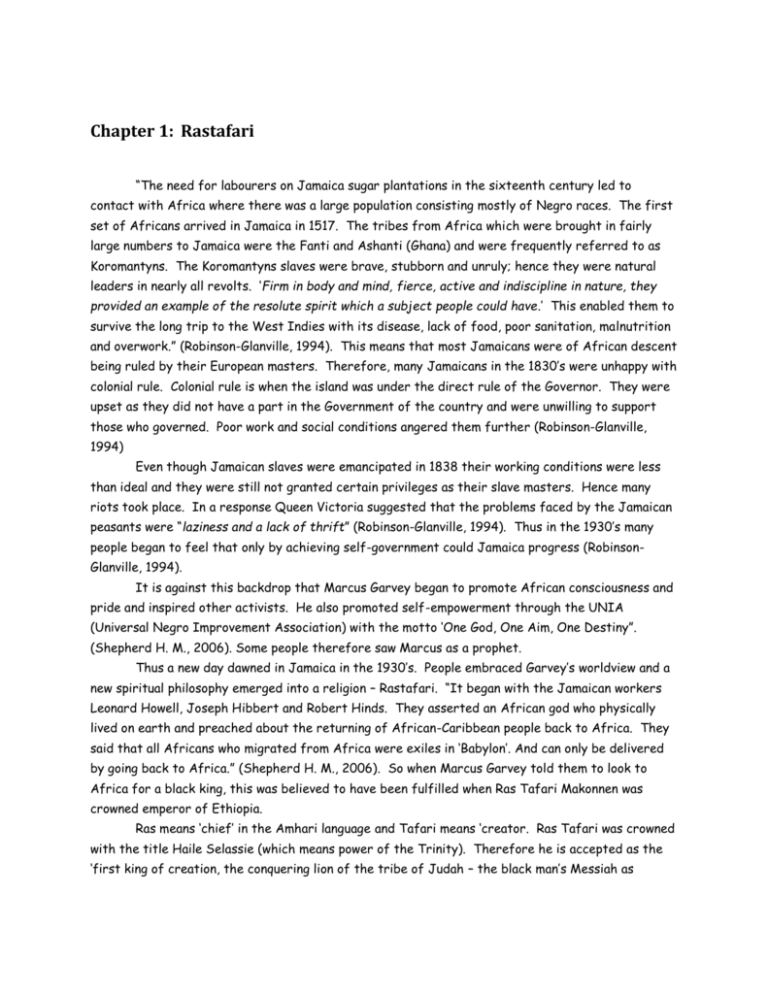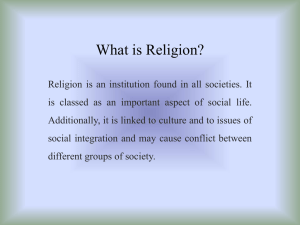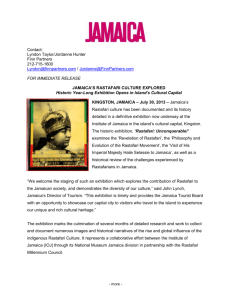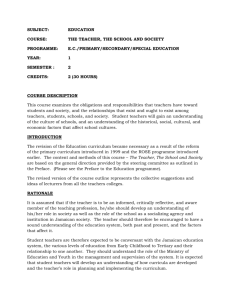File
advertisement

Chapter 1: Rastafari “The need for labourers on Jamaica sugar plantations in the sixteenth century led to contact with Africa where there was a large population consisting mostly of Negro races. The first set of Africans arrived in Jamaica in 1517. The tribes from Africa which were brought in fairly large numbers to Jamaica were the Fanti and Ashanti (Ghana) and were frequently referred to as Koromantyns. The Koromantyns slaves were brave, stubborn and unruly; hence they were natural leaders in nearly all revolts. ‘Firm in body and mind, fierce, active and indiscipline in nature, they provided an example of the resolute spirit which a subject people could have.’ This enabled them to survive the long trip to the West Indies with its disease, lack of food, poor sanitation, malnutrition and overwork.” (Robinson-Glanville, 1994). This means that most Jamaicans were of African descent being ruled by their European masters. Therefore, many Jamaicans in the 1830’s were unhappy with colonial rule. Colonial rule is when the island was under the direct rule of the Governor. They were upset as they did not have a part in the Government of the country and were unwilling to support those who governed. Poor work and social conditions angered them further (Robinson-Glanville, 1994) Even though Jamaican slaves were emancipated in 1838 their working conditions were less than ideal and they were still not granted certain privileges as their slave masters. Hence many riots took place. In a response Queen Victoria suggested that the problems faced by the Jamaican peasants were “laziness and a lack of thrift” (Robinson-Glanville, 1994). Thus in the 1930’s many people began to feel that only by achieving self-government could Jamaica progress (RobinsonGlanville, 1994). It is against this backdrop that Marcus Garvey began to promote African consciousness and pride and inspired other activists. He also promoted self-empowerment through the UNIA (Universal Negro Improvement Association) with the motto ‘One God, One Aim, One Destiny”. (Shepherd H. M., 2006). Some people therefore saw Marcus as a prophet. Thus a new day dawned in Jamaica in the 1930’s. People embraced Garvey’s worldview and a new spiritual philosophy emerged into a religion – Rastafari. “It began with the Jamaican workers Leonard Howell, Joseph Hibbert and Robert Hinds. They asserted an African god who physically lived on earth and preached about the returning of African-Caribbean people back to Africa. They said that all Africans who migrated from Africa were exiles in ‘Babylon’. And can only be delivered by going back to Africa.” (Shepherd H. M., 2006). So when Marcus Garvey told them to look to Africa for a black king, this was believed to have been fulfilled when Ras Tafari Makonnen was crowned emperor of Ethiopia. Ras means ‘chief’ in the Amhari language and Tafari means ‘creator. Ras Tafari was crowned with the title Haile Selassie (which means power of the Trinity). Therefore he is accepted as the ‘first king of creation, the conquering lion of the tribe of Judah – the black man’s Messiah as mentioned in the Bible. Many black Jamaicans embraced this new philosophy which sought to reject the white culture as evil and promote black superiority. During its genesis the Rastas faced much persecution and opposition by the state and the established Christian churches. They were shunned by family and friends, homes burned to the ground by the police and they had no recourse against those who perpetrated unlawful acts against them. Police officers would physically humiliate and psychologically abuse them (Hylton, 2002). This new philosophy required a new way of life which was reflected in their dress, speech and understanding of the Bible. They wore their hair locked and could be seen clad in khaki pants and shirt. They eat what is considered ‘ital food’ which is food without preservatives and salt as they believe they are the true Israelites. They adopted the Levitical diet in the Bible hence they do not eat pork etc. They smoke marijuana as a way of communicating with Jah. Rastas use the Bible but they reject the traditional interpretation of the priests. They believe they know the truth intuitively as they are the reincarnated Hebrews and they have been with God from the beginning of creation. Other texts used are the Kebra Negast (which traces Makonnen’s ancestry to Solomon – 225th descendant), and the The Holy Piby. Services include drumming, dancing in their own peculiar style, singing their own hymns, and preaching and exhortation based on Bible readings. Emphasis is on reasoning. Rastas share the following beliefs: Self-reliance and self-determination for Africans Observe the food taboos of the ancient Hebrews Many live by the Nazarine vow regarding shaving the face and consuming alcoholic beverages. Hence the matted locks Marriage is viewed in contempt however they have a strict code of fidelity Status distinctions severely restricted Nyabinghi or “locksmen’ who claim to be priests, regard themselves as being of the Aaronic line; reincarnated Hebrews Women are subordinate to men Do not believe in ancestral spirits, death is the result of sin Smoking of ganja, marijuana, ily, colly, tampi, herb or simply weed (Psalm 104:14) Ital food: food that has never touched chemicals or is natural and not in cans. The food is cooked but served in the rawest form possible; without salts, preservatives or condiments. Liquor, milk, coffee and soft drinks are viewed as unnatural. Pan-Africanism: is a worldview which seeks to unite and uplift the African diaspora as part of a global African community “I” talk (I and I – refers to God in all or the brotherhood of mankind) (CXC, 2009) Festivals include Grounation: (Sing their songs of praise to Jah, share a common meal of ‘ital’ food, smoking of the herb which is done communally. This is where they assert and re-affirm their beliefs etc), African Liberation Day and the birthday of His Imperial Majesty – Emperor Haile Selassie. Rastas have evolved and there are three sects namely Bobo Shanti, Twelve Tribes and Nybinghi.











